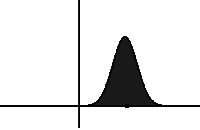
Photo from wikipedia
Physics-informed neural networks (PiNNs) recently emerged as a powerful solver for a large class of partial differential equations (PDEs) under various initial and boundary conditions. In this paper, we propose… Click to show full abstract
Physics-informed neural networks (PiNNs) recently emerged as a powerful solver for a large class of partial differential equations (PDEs) under various initial and boundary conditions. In this paper, we propose trapz-PiNNs, physics-informed neural networks incorporated with a modified trapezoidal rule recently developed for accurately evaluating fractional Laplacian and solve the space-fractional Fokker-Planck equations in 2D and 3D. We describe the modified trapezoidal rule in detail and verify the second-order accuracy. We demonstrate that trapz-PiNNs have high expressive power through predicting the solution with low L 2 relative error by a variety of numerical examples. We also use local metrics, such as point-wise absolute and relative errors, to analyze where it could be further improved. We present an effective method for improving the performance of trapz-PiNN on local metrics, provided that physical observations or high-fidelity simulation of the true solution are available. The trapz-PiNN is able to solve PDEs with fractional Laplacian with arbitrary α ∈ ( 0 , 2 ) and on rectangular domains. It also has the potential to be generalized into higher dimensions or other bounded domains.
Journal Title: Chaos
Year Published: 2022
Link to full text (if available)
Share on Social Media: Sign Up to like & get
recommendations!